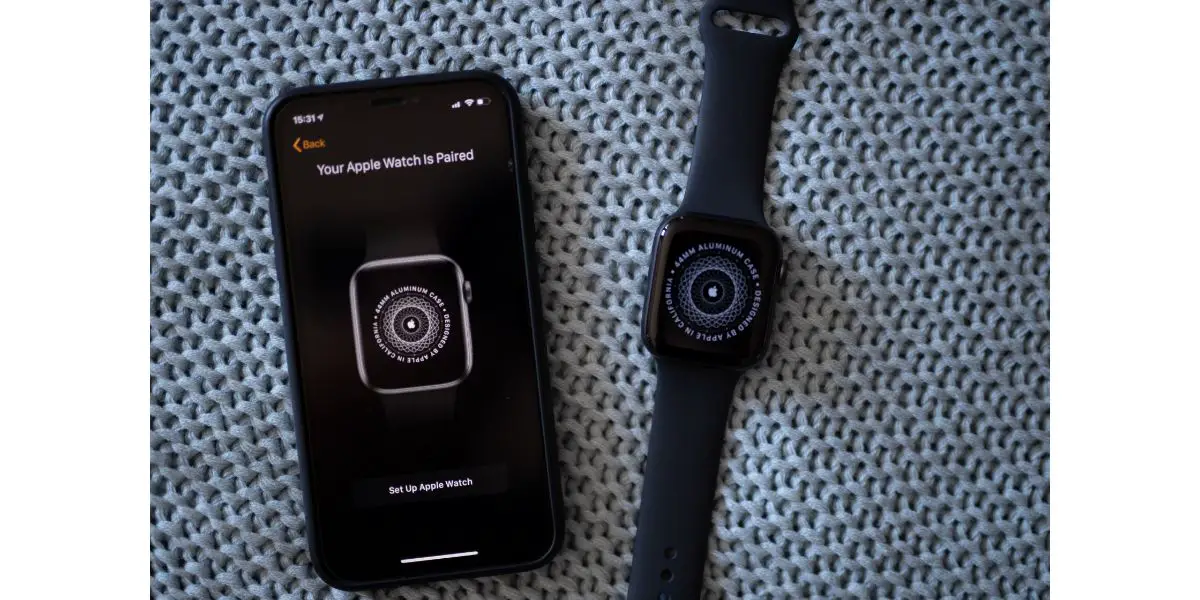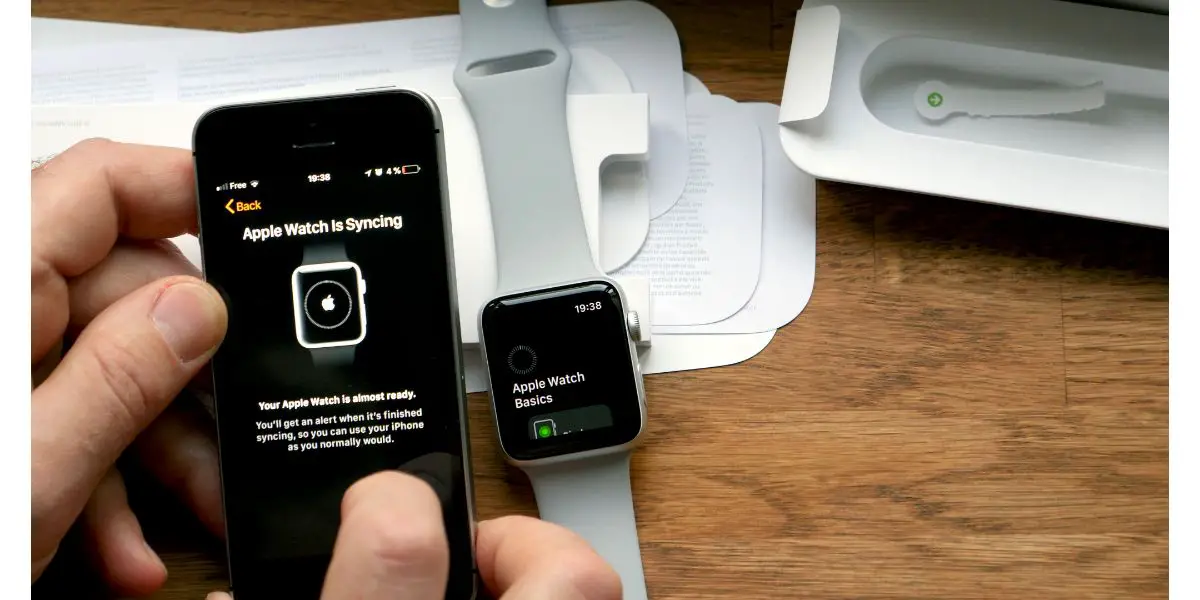Disclaimer: This post may contain affiliate links, meaning we get a small commission if you make a purchase through our links, at no cost to you. For more information, please visit our Disclaimer Page.
Once upon a time, Apple Watches were overly expensive novelty items. The argument can be made that Fitbit changed all of that, driving Apple into the arms of the exploding health and wellness market. Now, Apple Watches are phenomenal health information machines, so long as they’re pairing with iPhones properly.
An Apple Watch and an iPhone communicate via Bluetooth and that’s one of a few reasons yours may drop its connection. Bluetooth should be free of interference and within range. It’s also possible both devices need an update or the battery is low.
These are premium devices, with iPhones easily running into $1k territory and the newest Apple Watches not far behind. The last thing you want is to dump $2k into an iPhone 14 Pro Max and an Apple Watch Ultra and the two devices refuse to get along.
Table of Contents
5 Potential Fixes To An Apple Watch That Keeps Unpairing
1. Battery
Both your Apple iPhone and Apple Watch should be in optimal condition when you pair them for the first time. You don’t want to pair your brand new Apple Watch, right out of the box, with an iPhone that’s on 10% battery.
Since both the Apple Watch and iPhones cut back much of their capabilities when they’re placed in ‘Low Power Mode,’ the odds increase they’ll have trouble maintaining a connection. This is especially true when both devices are very low on battery.
The best fix for this potential issue is to keep your devices charged and take good care of the batteries. That means two things. First, when your iPhone or Apple Watch bottoms out on the battery, charge it—and not just for five minutes (unless it’s an emergency and you just don’t have the time).
Second, practice optimal battery maintenance with both devices. Every rechargeable battery comes with a finite number of charges before the battery is no longer optimal enough to bother with the device anymore.
This set number of charges is known as ‘cycles,’ just like a marine battery.
Never charge to 100% or, at the very least, use devices that cut off at 80%. Keep your Background App Refresh option off.
Turn off the location unless you’re actively using it. In other words, customize both your iPhone and Apple Watch to maximize battery efficiency.
2. Bluetooth Interference
If there is one communication protocol that is more shady than WiFi, it’s Bluetooth. Like WiFi, everything on the planet is disruptive to Bluetooth signals. Concrete walls, wood, glass, brick, mortar, metal, you name it.
WiFi signals and other Bluetooth signals are also disruptive. The newer Apple Watches, such as the Ultra and Apple Watch 8, support Bluetooth 5.3, which is a better Bluetooth technology than its predecessors. However, you still need to be within 33 feet of your iPhone for a solid connection.
Depending on what’s in between you and your iPhone, along with other signals throughout the immediate area, that 33 feet is liable to shrink in a hurry.
So, if you go to the gym and leave your iPhone in your gym bag while you work out, there’s a good chance your Apple Watch will unpair constantly.
It’s no different than wearing Bluetooth headphones and getting irritated when it connects and disconnects 500 times while you’re in the convenience store, just trying to buy a bottle of water.
By the time you get out of the store, you want to shatter those headphones and sling your water across the parking lot.
This is one of the biggest reasons for an Apple Watch unpairing with an iPhone. Bluetooth. It will always find a way to mess with you at the worst possible time.
3. Update your iPhone and Apple Watch
These things are supposed to update automatically. In fact, most iPhones and Apple Watches come out of the box with automated updates turned on as the default setting.
It almost never works out that way, however. You’ll get the “update tonight” message on your iPhone and wake up the next morning to the “failed to update” message.
You gotta love technology. The thing is, if you’re iPhone and Apple Watch are not caught up on the most recent updates, it can create conflicting communication problems between the two devices.
Fortunately, even if you have to jump in and update them yourself, it’s not too hard to do.
Apple Watch
- Make sure your Apple Watch is connected and very close to your iPhone
- Pick up your iPhone and go to the Home screen
- Open your Apple Watch App
- Select ‘My Watch’
- Select ‘General’
- Select ‘Software Update’
- Select ‘Download and Install’ if an update is available
iPhone
- Go to the Settings Menu
- Select ‘General’
- Select ‘Software Update’
- If an update pops up, select ‘Install Now’
- Follow the onscreen instructions
You should turn the ‘Automatic’ feature on while you’re in the Software Update’ section. Is it the most dependable thing in the world?
Absolutely not. What it will do is alert you that you have a software update available and it will download and install that night.
The fact that it might not install is irrelevant. What is relevant is that you’re aware there is an update out there and you can go ahead and do it yourself if your iPhone fails to do so.
If you find your apple watch to be stuck on pairing, check out our article here that could help resolve that.
4. Unpair and Pair Manually
Another troubleshooting tip you can try is to unpair the Apple Watch and pair it again manually. This is a relatively simple process and it’s known for solving this very issue, especially when it’s a persistent problem.
- Jump on your iPhone
- Open the Apple Watch app
- Select ‘All Watches’
- Select the ‘info button’ next to your watch
- Select ‘Unpair Apple Watch’
- Select ‘unpair’ again
- Enter your Apple ID password to confirm
- Turn off your Apple Watch and turn it back on
- While turning it on, hold the side button down until you see the pairing mode symbol on the Apple Watch screen
- Hold your iPhone near the Apple Watch (Make sure Bluetooth is on)
- Select ‘Continue’
- Select ‘Set Up For Myself’
- Continue through the setup process
This method is simply like adding a brand new Apple Watch to your iPhone. It’s fairly simple and straightforward and it’s a good option anytime the two devices are having any problems.
5. Restart Both Devices
We saved the simplest troubleshooting tip for the very last. All you need to do on this one is reset both devices. If this is your first time ever messing with an Apple Watch, turning it off and on is relatively simple as well.
Hold the side button on your Apple Watch until you see the familiar ‘slide to power off’ toggle pop up on the screen. It’s exactly the same as the iPhone except you’re only pressing and holding one button.
Wait about thirty seconds to a full minute and power it back on. In fact, while you’re waiting to power it back on, go ahead and power off your iPhone by pressing and holding the Volume Down and Power buttons until the slider appears.
Power up the iPhone first, followed by the Apple Watch, and allow them to connect again on their own. At this point, simply give it some time and see if the original disconnection issue continues.
Final Thoughts on Apple Watch Unpairing
There you have it. Those are five of the best methods for troubleshooting an Apple Watch that’s having problems remaining connected to your iPhone or any smartphone for that matter (Yes, you can connect an iPhone to other smartphones).
This should get you up and running but, if you continue having problems with the two devices, it’s often worth the time to give Apple Customer Service a call, especially if there is an Apple Care center somewhere near you.


